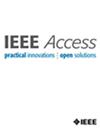A Review of Advanced Deep Learning Methods of Multi-Target Segmentation for Breast Cancer WSIs
IF 3.4
3区 计算机科学
Q2 COMPUTER SCIENCE, INFORMATION SYSTEMS
引用次数: 0
Abstract
Breast cancer is one of the most common cancers among women, with its heterogeneity posing significant challenges for diagnosis and treatment, profoundly impacting patient prognosis and quality of life. Whole Slide Imaging (WSI) in digital pathology provides high-resolution images that enable a comprehensive examination of the tumor microenvironment, offering advanced tools for breast cancer diagnosis and prognostic evaluation. However, manually reviewing whole slide images (WSIs) for tissue segmentation is time-consuming and prone to errors, highlighting the need for multi-target deep learning models to automate the segmentation of these complex structures. Multi-target segmentation offers distinct advantages by simultaneously processing multiple interrelated tissue regions within a single image, thereby enhancing accuracy and efficiency. Despite the potential of deep learning techniques in automating pathological analysis, their clinical adoption faces significant challenges. To address these, this paper proposes six criteria focused on clinical acceptability of deep learning methods: inherent limitations of WSIs, feature extraction, annotation requirements, efficiency, automated quantification, and interpretability. A rigorous review of publicly available datasets and deep learning methods identifies key challenges for clinical adoption. Following the Preferred Reporting Items for Systematic Reviews and Meta-Analyses (PRISMA) guidelines, this review analyzes 29 core articles, highlighting the critical role of multi-target segmentation in breast cancer digital pathology while assessing the limitations of these techniques in clinical applications. Based on this analysis, this paper proposes six criteria to enhance the diagnostic performance of deep learning methods in multi-target segmentation for breast cancer digital pathology and to improve the clinical acceptability of deep learning methods.乳腺癌wsi多目标分割的先进深度学习方法综述
乳腺癌是女性中最常见的癌症之一,其异质性给诊断和治疗带来了重大挑战,深刻影响患者的预后和生活质量。数字病理学中的全切片成像(WSI)提供高分辨率图像,能够全面检查肿瘤微环境,为乳腺癌诊断和预后评估提供先进的工具。然而,手动检查整个幻灯片图像(wsi)进行组织分割是耗时且容易出错的,这突出了对多目标深度学习模型的需求,以自动分割这些复杂的结构。多目标分割通过在单个图像中同时处理多个相互关联的组织区域,从而提高准确性和效率,具有明显的优势。尽管深度学习技术在自动化病理分析方面具有潜力,但其临床应用面临着重大挑战。为了解决这些问题,本文提出了六个关于深度学习方法临床可接受性的标准:wsi的固有局限性、特征提取、注释要求、效率、自动化量化和可解释性。对公开可用数据集和深度学习方法的严格审查确定了临床采用的主要挑战。根据系统评价和荟萃分析的首选报告项目(PRISMA)指南,本综述分析了29篇核心文章,强调了多靶点分割在乳腺癌数字病理中的关键作用,同时评估了这些技术在临床应用中的局限性。在此基础上,本文提出了提高深度学习方法在乳腺癌数字病理多靶点分割中的诊断性能、提高深度学习方法临床可接受性的六个标准。
本文章由计算机程序翻译,如有差异,请以英文原文为准。
求助全文
约1分钟内获得全文
求助全文
来源期刊

IEEE Access
COMPUTER SCIENCE, INFORMATION SYSTEMSENGIN-ENGINEERING, ELECTRICAL & ELECTRONIC
CiteScore
9.80
自引率
7.70%
发文量
6673
审稿时长
6 weeks
期刊介绍:
IEEE Access® is a multidisciplinary, open access (OA), applications-oriented, all-electronic archival journal that continuously presents the results of original research or development across all of IEEE''s fields of interest.
IEEE Access will publish articles that are of high interest to readers, original, technically correct, and clearly presented. Supported by author publication charges (APC), its hallmarks are a rapid peer review and publication process with open access to all readers. Unlike IEEE''s traditional Transactions or Journals, reviews are "binary", in that reviewers will either Accept or Reject an article in the form it is submitted in order to achieve rapid turnaround. Especially encouraged are submissions on:
Multidisciplinary topics, or applications-oriented articles and negative results that do not fit within the scope of IEEE''s traditional journals.
Practical articles discussing new experiments or measurement techniques, interesting solutions to engineering.
Development of new or improved fabrication or manufacturing techniques.
Reviews or survey articles of new or evolving fields oriented to assist others in understanding the new area.
 求助内容:
求助内容: 应助结果提醒方式:
应助结果提醒方式:


